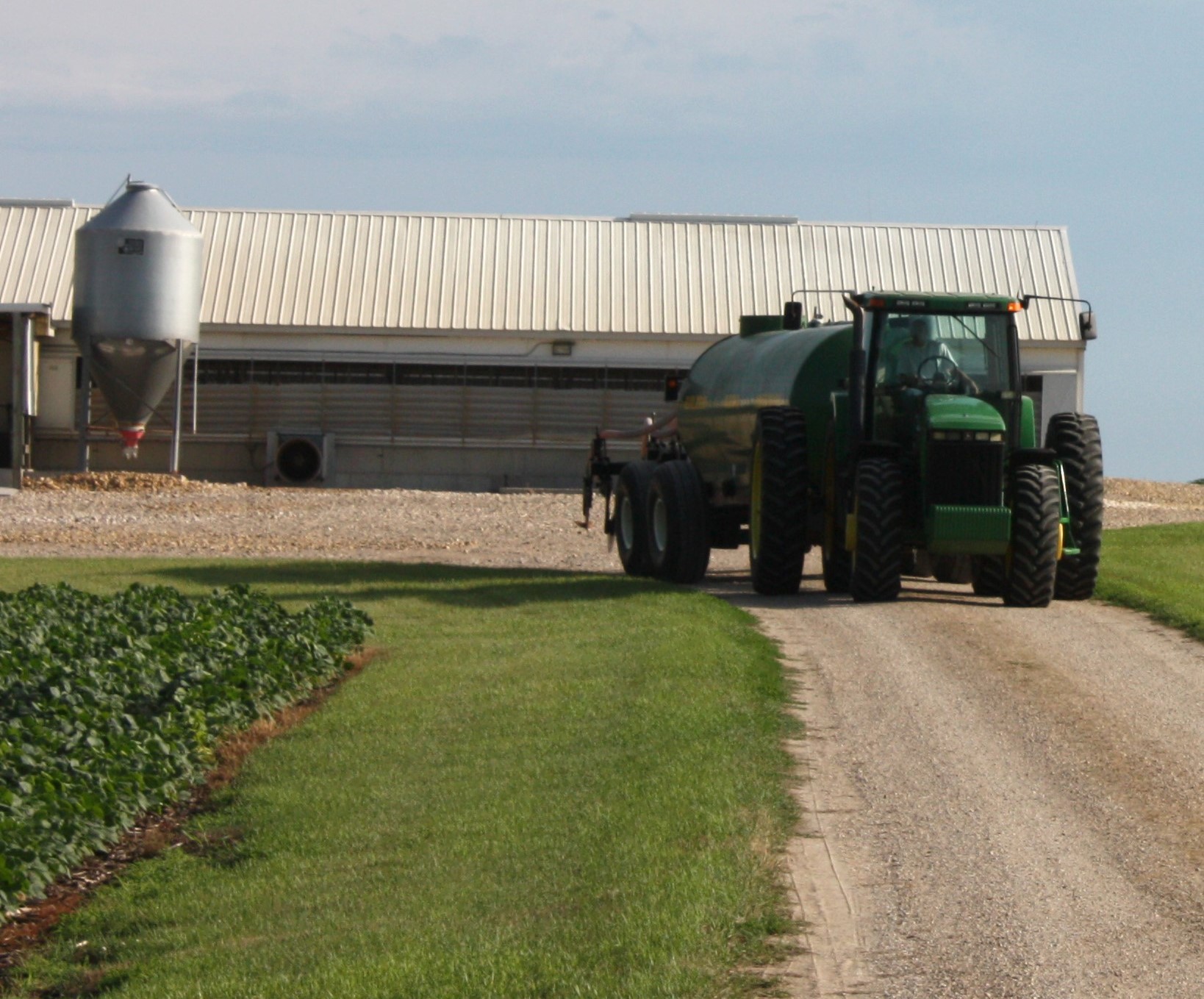Management Over Medication: Fall and winter manure handling and storage tips for small swine farms
How to properly handle swine manure on a small farm in the fall and winter seasons.

A proper plan for handling and storing manure during harsh and severe weather conditions, particularly in cold and wet weather, can reduce the likelihood of surface and groundwater contamination. Managing swine manure during fall and winter is essential to minimize environmental impacts and maintain a healthy and sanitary animal environment. Some tips for fall and winter manure management follow:
Storage and handling
Storing manure in a covered storage facility is the best way to keep it dry. Other options include a facility that captures any rainwater that encounters the manure. The water is disposed of along with the waste or allowed to evaporate within the facility. The facility should have an impermeable clay concrete, asphalt, or compact clay base. Place the storage away from surface and underground drainage systems to prevent leakage and contamination of nearby water sources. Regularly inspect and maintain the manure storage to address any potential issues. Implementing a regular spreading schedule to avoid overfilling will also decrease the risk of waste washing away.
Nutrient management planning
Swine manure can be a valuable nutrient for farming crops. Even small amounts of livestock manure can benefit gardens and soil health. A nutrient management plan (NMP) that considers the nutrient content of swine manure and the specific crop nutrient requirements is an excellent starting point to realize the value of your manure. The NMP should guide manure application to fields, considering the timing, rates, and application methods to optimize nutrient utilization while minimizing environmental impacts.
Application timing
During fall and winter, it's crucial to consider weather conditions, such as rainfall and snowmelt, when planning manure application. Avoid applying manure before heavy rain events or when the ground is saturated, as it increases the risk of nutrient runoff and water pollution. Frozen and snow-covered ground also increases the risk of runoff. If you must spread manure during the winter, spread it on fields with a slope of 6% or less.
Choose a manure application method appropriate to the type of manure and the equipment available as well as one that will minimize nutrient runoff to maximize crop uptake. Incorporate manure into the soil using injection or incorporate within 24 hours. This will reduce the exposure of nutrients to surface runoff as well as maintain the nutrients in the soil for the crop.
.jpg)
Setback distances
Adhere to setback distances from water bodies, wells, and sensitive areas outlined in local regulations and the Generally Accepted Agricultural and Management Practices (GAAMPs). These distances help protect water quality by reducing the risk of nutrient runoff and contamination.
Record keeping
Maintain accurate records of manure application rates, timing, and locations. These records are essential for compliance with regulations, tracking nutrient inputs, and evaluating the effectiveness of your manure management practices. You can use the manure record sheet provided in the Michigan State University (MSU) Extension Small Farm Manure Management Planning factsheet.
Stockpiling
Manure that will be spread soon can be stockpiled in fields. Properly manage these stored piles to avoid odors. Covering these stockpiles with straw or blankets can help with odors and pests. Place the pile where leaching and runoff will not occur or where protections are in place.
Equipment maintenance
Regularly inspect manure handling equipment, such as pumps, spreaders, and injection systems, to ensure they are in good working condition. Repair any leaks or malfunctions promptly to prevent spills and environmental contamination. To learn about proper inspection, consider becoming certified through the Michigan Manure Hauler Certification Program.
Compliance with regulations
Stay informed about local, state, and federal manure management and nutrient application regulations. Comply with these regulations to protect the environment, maintain good community relations, and avoid potential penalties or fines. The Michigan Department of Agriculture and Rural Development (MDARD) has several resources available. The Generally Accepted Agricultural and Management Practices for Manure Management and Utilization document contains rules and regulations to follow for manure handling and storage for all livestock species.
MSU Extension also has several resources for manure management, including articles and experts. Your local agricultural extension office, regulatory agencies, and nutrient management experts can provide guidance specific to your location and farm. They can provide valuable information and resources tailored to your area's requirements and help you implement effective manure management practices.



 Print
Print Email
Email